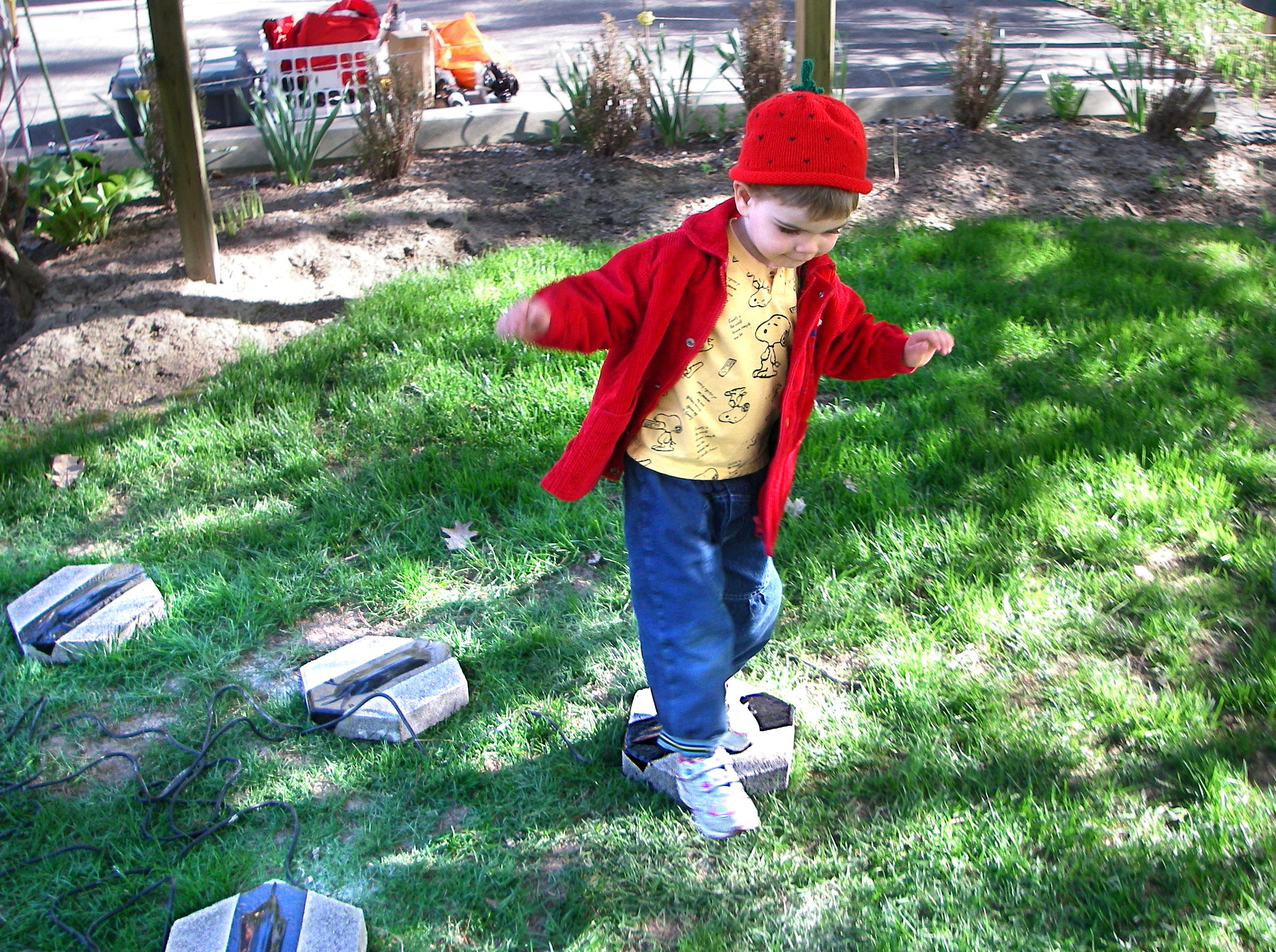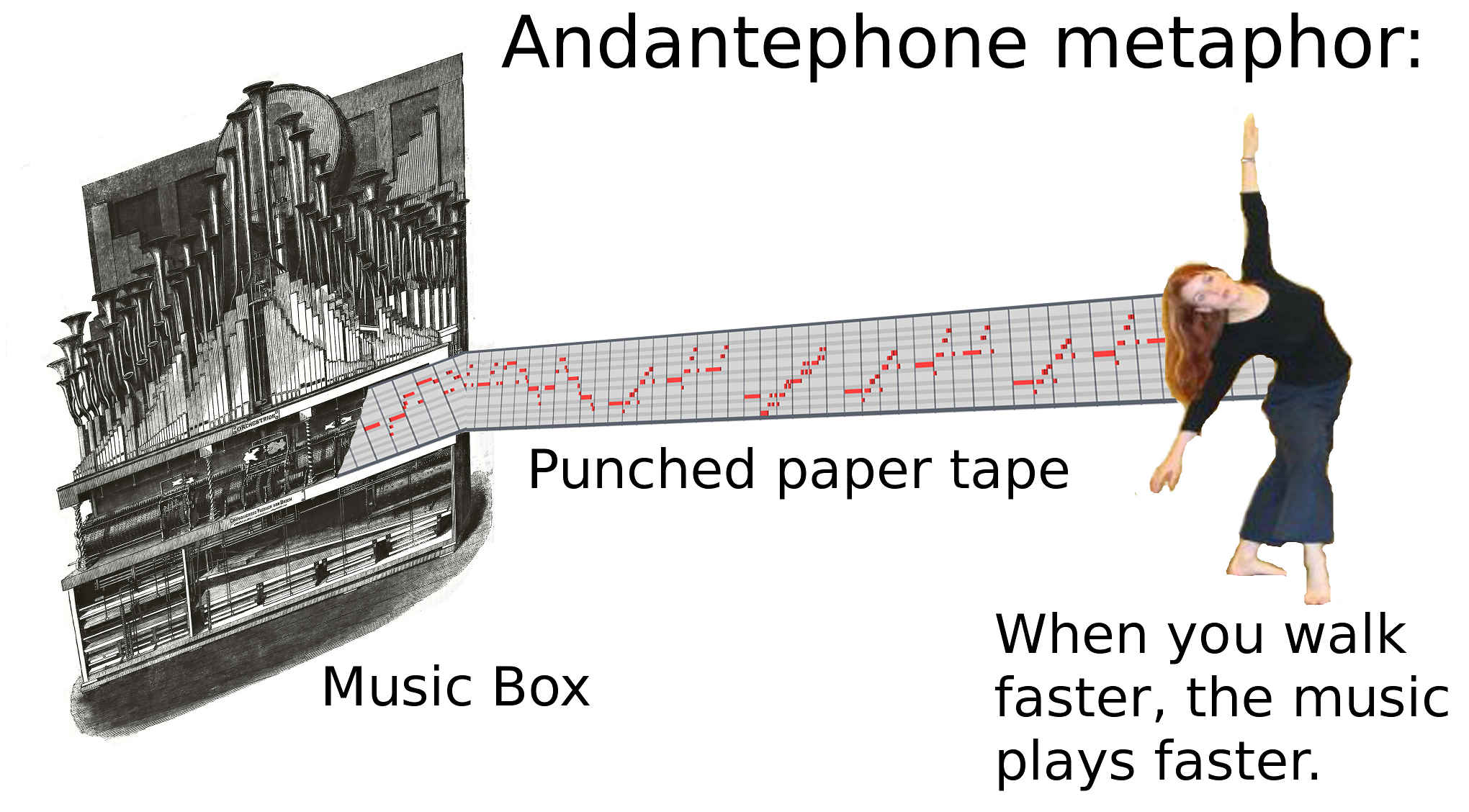
The Andantephone: Stepping-through music from Steve Mann on Vimeo.

Unlike other instruments like the piano or organ, where the keys are
arranged in order of pitch from lowest on the left to highest on the right,
imagine you re-arrange the piano keys in the order of time time at which
you play them in a particular song.
The leftmost key is the note that occurs first in the song.
The second key is the note that occurs second in the song, and so on.
Obviously some keys on the piano will repeat, e.g. if the song starts on
"C" then the first key on the piano will be "C", and if there are other
occurences of "C" in the song, then other keys on the piano will also
play "C". To play the song on the piano, you simply press the keys in
order from left-to-right. If you want to play a different song, you
simply select (download) it, and the piano reconfigures itself in the new
order prescribed by the new song. Now imagine this concept transferred to
a piano that you walk on!
Here is a fanciful drawing that helps illustrate this new inventive
concept:
 (click for full reslution version).
(click for full reslution version).
You can imagine yourself walking or running or dancing or crawling along
the ground with a paper tape or rope tied to your waist, and you're
in some sense pulling this virtual or imaginary rope or tape through
an orchestrion or player-piano. As you walk faster the song plays faster.
As you slow down the song slows down, and if you stop, the song stops.
But unlike the orchestrion or player-piano, the sound is not
mechanical, because the sound ALSO changes depending on HOW you step or
stomp or drag your feet. Every note you play is played with a degree of
expressive quality much like a violin (or strings ensemble),
and your feet (or hands) are the bow(s).
Now, for the first time in human history, anyone can play a whole orchestra with a highly individualized and expressive creativity that is the opposite of the mechanically tegical sound of other easy-play user-interfaces.
The invention has a proven appeal in children's playgrounds and day-care centres, child-care centres, public parks, beaches, campgrounds, and the like.
Theme parks can use the invention so that when guests arrive, the guests unwittingly play the theme song as they walk into the park.
Shoemakers can add highly expressive music to their shoes.
Olympic figure skaters can add highly exprssive musical instruments to their skates (example video).
Ski makers and toboggan makers and snowboard makers can create violin-like instruments that play on the actual sounds made by scraping snow. Since there are a wide variety of sounds that can be made by scraping snow, the instrument will be highly expressive and can be played by people with no musical background, as well as satisfy musical experts with its capacity to express nuances and fine musical variation.
Runners use the invention to let their music keep pace with them, rather than them keeping pace with their music.
There is a very large market for the product, as there are a large number of people that like and listen to music, but a smaller number skilled at playing instruments. Also even those skilled at playing instruments enjoy the fact that the andantephone can be played while doing other things like walking, jogging, skating, skiing, or even sawing through wood (the andantephone can be built into a saw so that it sounds like and works like a violin bow while sawing through wood, for example).
The instrument is also useful for rehabilitation and special needs, e.g. as with the related instrument, hydraulophone, used by the CNIB to help with rehabilitation of blind and deafblind children using touch and fine-motor skills.
As a musical instrument for the deaf, it also has many possibilities, because the ground pads or foot sensors can work both ways to both sense and stimulate the foot, and therefore function as a tactual aid.
Another musical instrument invention is the hydraulophone.
"Mannventions" ... Return to a list of some of Steve Mann inventions